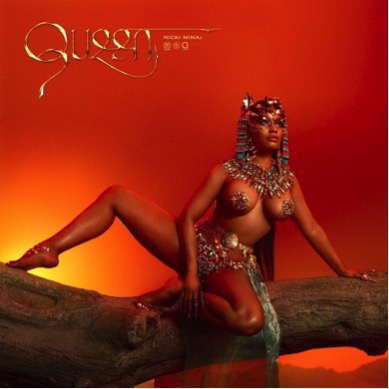Listening to the radio might be a relatively passive activity, but in some cases, the process of curating the public’s listening experience is not only active and deliberate; it is targeted. To the average listener enjoying a country radio station, there may appear to be nothing amiss or overtly discriminatory about the song choices. More often than not, the set is random or seems to be nothing more than a regurgitation of the week’s Top 40 list, which could in no way be influenced by ulterior motives. However, when viewed through a critical lens, it becomes clear that not only do many country radio stations follow a very specific pattern, but they deliberately maintain that pattern through a set of unspoken rules. These rules have been in place for decades, and their effects are widespread and deeply harmful to the subset of female country artists as a whole.
According to Rolling Stone, many country radio programs such as Country Countdown USA and American Country Countdown with Kix Brooks (both weekly USA chart-topper stations) are guilty of determining what songs they play based partially on the gender of the artist. This is an unspoken rule that is apparently widely known throughout the radio industry. Stations are generally discouraged from giving female artists too much airtime under the baseless assumption that listeners strongly prefer male singers. Specifically, these unspoken guidelines direct stations never to play two female artists in a row because it is believed that doing so stunts the stations’ popularity and disappoints listeners who ostensibly have an overwhelming preference for male performers. In January 2020, 98 KCQ, a Michigan country station, publicly tweeted, “We cannot play two females back to back… not even Lady Antebellum or Little Big Town.” This message attracted the attention of many country music fans as well as country star Kelsea Ballerini, who spoke out in support of female country artists and pointed out several of the discriminatory challenges women face in the field. She expressed her disappointment in the music industry at large and won the support of several other country musicians, but her experience is only one example of an issue that is deeply rooted in radio companies and has been for years.
The practice of limiting female voices on country radio dates back to the 1960s, although the surrounding circumstances have shifted dramatically. Originally, female artists were spaced throughout the set in order to maintain the illusion of diversity when they were vastly outnumbered by male country artists. Although still obviously gender-motivated, this strategy at least had an underlying practical function that was not rooted in modern sexism. Today, however, the proportion of female country singers has increased dramatically and yet the airtime they are afforded has not undergone the drastic change that would reflect this. In many stations, this discriminatory practice is continued under the misguided belief that its original cause was the unpopularity of female singers.
In recent years, studies have been conducted on the actual popularity of male and female country musicians, as well as the proportions of each presented on the radio. The WOMAN Nashville organization investigated gender representation in country format radio in 2019 and found that the amount of male artists played every single year from 2000 to 2018 vastly outweighed female artists as well as male-female ensembles, often doubling or tripling their airtime. The study also acknowledges that male-female ensembles are classified as female groups, which must be taken into consideration when observing the low portion of airtime allotted to them. This is a trend which has only increased over the last decade; Rolling Stone also reports that “In 2000, women held 33.3% of songs on the year-end country airplay reports, but by [2018], they came in at 11.3% — a decline of 66% percent.” This decline is due in part to the degrading cycle fueled by the exclusion of female artists. When less songs by women are aired, listeners gain less familiarity with their names and their art, which in turn decreases the demand for female artists on the radio. The Top 40 lists many stations routinely play disproportionately favor men not because of their superior musical ability but because female talent has been systematically repressed in the genre.
Over the course of decades, this pattern has persisted and made it increasingly difficult for female artists to gain recognition and popularity. Even the most famous female country stars are not immune to this effect. Carrie Underwood, the top-selling female country artist, has only three million sales compared to Kenny Chesney’s six million. Therefore, the exclusion of women’s voices on country radio has not only a social but a fiscal impact and forces female artists out of the musical market while simultaneously discouraging the rise of new female singers. In 2018, the ratio of male to female singers on the radio was 9.7:1, which is certainly not an encouraging statistic for aspiring female musicians who want their voices to be heard. Moreover, the same unspoken rule that prohibits two female singers from being played in a row states that women should not make up more than fifteen percent of any given set. The country music landscape is generally not as male-dominated as many radio stations would have their listeners believe, but the more normalized these procedures become, the more difficult it becomes for the voices of female musicians to be heard.
As a whole, the challenges female country singers face greatly overshadow those faced by men, due largely to the discriminatory practices normalized by the radio industry. Refusing to air these artists’ songs is not only sexist, but it silences the voices of women and detracts from the chances of future rising female singers as well as female-male ensembles in a space that seems specifically designed to keep them on the sidelines. In order to achieve equality, women must be allowed time on the radio proportional to what is offered to men, and the meaningless social norms that perpetuate these concepts must be set aside.








